#angiospermae
Text

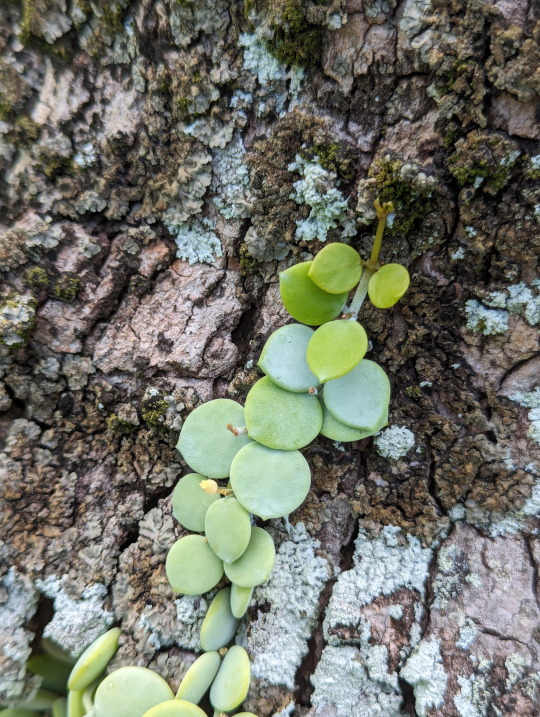
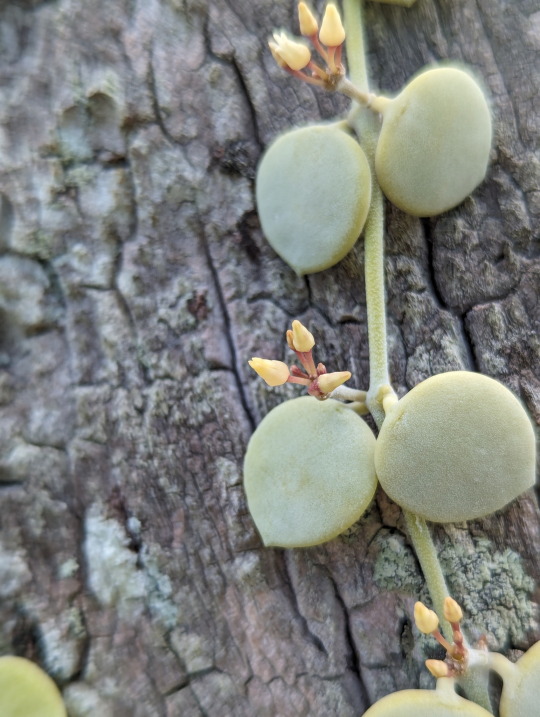
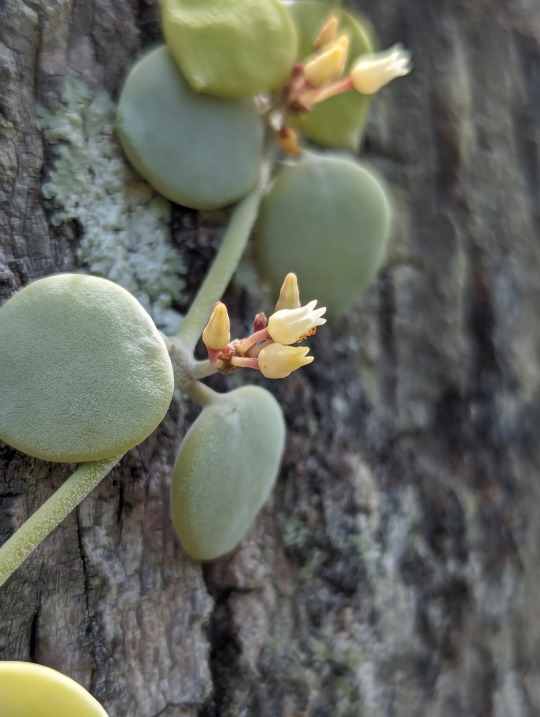

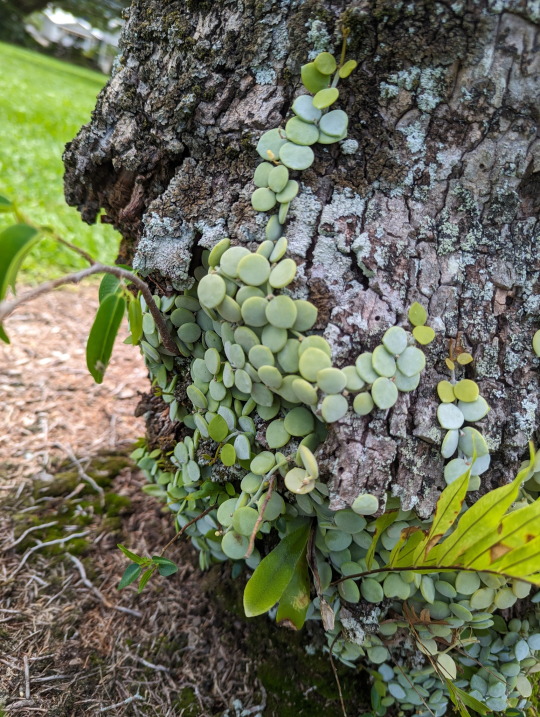
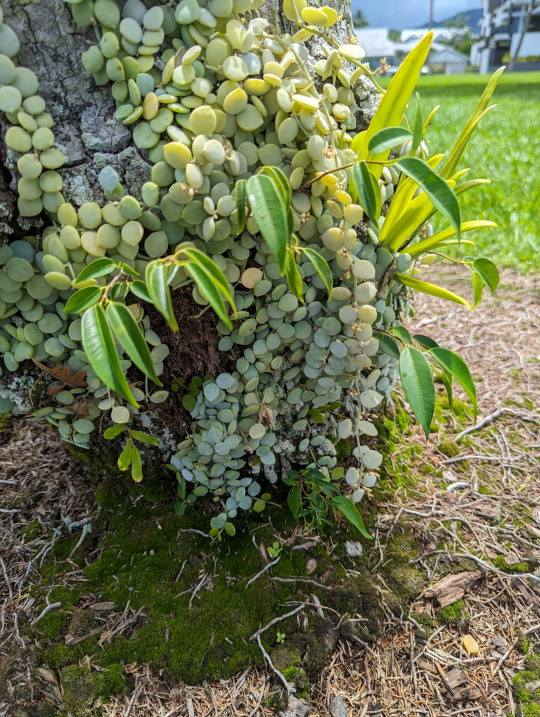
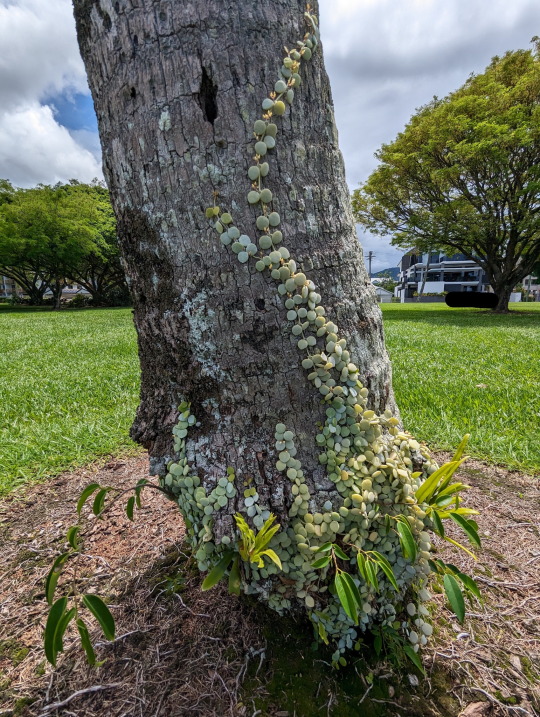
Beautiful button orchid growing on a palm tree.
17/01/24 - Dischidia nummularia
QLD:WET - Cairns
#nature#Dischidia nummularia#Button Orchid#Plantae#plants#botany#Milkweeds#Gentianales#Magnoliopsida#Dicots#Angiospermae#Flowering Plants#angiosperms#Tracheophyta#Vascular Plants
100 notes
·
View notes
Text
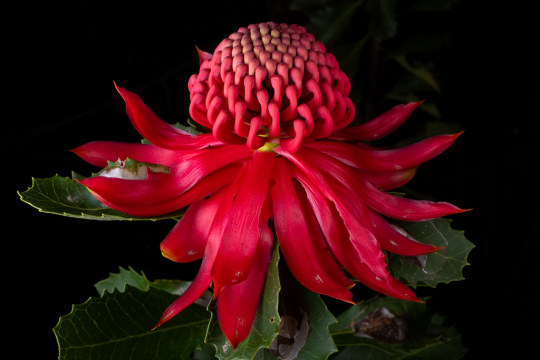
#IFTTT#Flickr#waratah#telopeaspeciosissima#telopea#speciosissima#plantae#tracheophyta#angiospermae#magnoliopsida#proteales#proteaceae#grevilleoideae#embothrieae#embothriinae#sydney#newsouthwales#australia#flower#native#nature#canon#macro#night#flash#jonodashper#jonathondashper#naturephotography#plant
8 notes
·
View notes
Photo
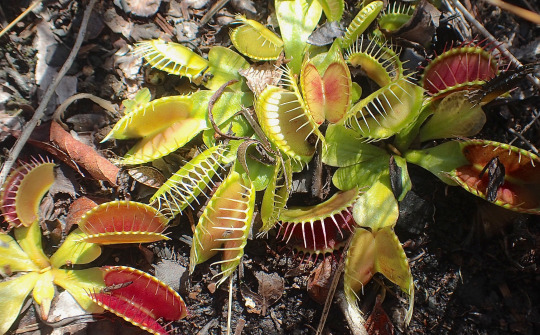
Venus flytrap (Dionaea muscipula)
photo credit: Allen Belden
#venus flytrap#Dionaea muscipula#angiosperms#angiospermae#Caryophyllales#carnivorous plants#united states#plant
25 notes
·
View notes
Photo
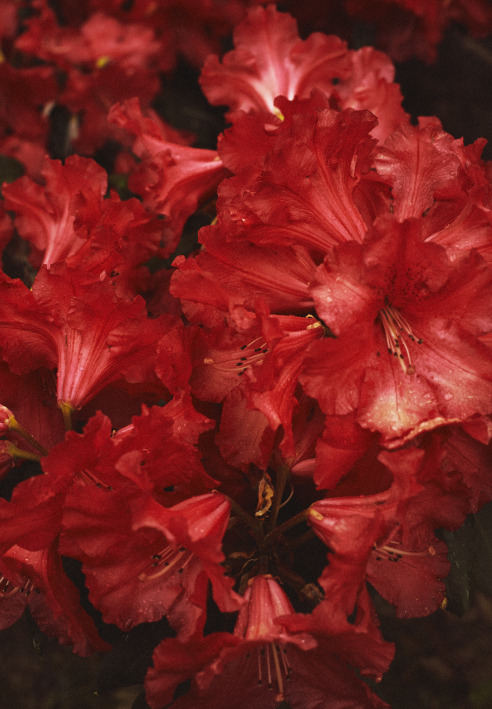
rhododendron
#rhododendron#rododendro#the plant#theplantmagazine#flowers#spring flora#ericaceae#ῥόδον#angiospermae#magnolia#ruben vega
71 notes
·
View notes
Text
𝐁𝐚𝐫𝐛𝐞 𝐝𝐢 𝐛𝐨𝐬𝐜𝐨 ツ
Le 𝐁𝐚𝐫𝐛𝐞 𝐝𝐢 𝐛𝐨𝐬𝐜𝐨 (Usnea) è un genere di licheni frutticosi grigiastri-verdastri, con crescita simile a piccoli arbusti spogli ancorati su cortecce o rami di alberi.

Il genere appartiene alla famiglia delle Parmeliaceae ed ha distribuzione cosmopolita.
Le specie del genere vengono comunemente chiamate barbe di bosco e ricordano il genere Evernia; sono anche simili a quelle appartenenti al genere Alectoria. La differenza risiede nella caratteristica elasticità dei talli di Usnea, mancante invece nel genere Alectoria.
L'Usnea ricorda, inoltre, una specie di angiosperma del genere Tillandsia, tanto che quest'ultima è stata chiamata Tillandsia usneoides; come altri licheni, l'Usnea è una simbiosi tra un fungo e un'alga.
Nel genere Usnea, il simbionte fungino appartiene alla divisione degli Ascomycota, mentre il simbionte algale alla divisione delle Chlorophyta.
Come tutti i licheni con tallo frutticoso, la morfologia delle specie di Usnea è simile a quella di un piccolo arbusto ancorato alla corteccia dell'albero ospite; al contrario di altri licheni con morfologia simile, le specie di questo genere hanno una corda elastica che decorre al centro del tallo, che si può osservare tirando delicatamente un filamento del tallo.
L'Usnea si riproduce per via vegetativa (frammentazione, asessuata); attraverso i soredi, o sessuale, oppure tramite ascogoni e spermatogoni.
In natura, il tasso di crescita dei licheni è lento, seppure in condizioni di laboratorio è stato possibile velocizzare la crescita di Usnea coltivata in loco.

L'Usnea cresce spesso su alberi morenti o malati, dato che l'assenza delle foglie permette al lichene una maggiore capacità di fotosintesi; questo ha portato i giardinieri a credere che questi licheni siano la causa delle malattie che affliggono gli alberi ospite.
Le specie di Usnea sono particolarmente sensibili all'inquinamento atmoferico: in particolar modo all'anidride solforosa; in caso di cattive condizioni ambientali, possono crescere solo pochi millimetri, se riescono a sopravvivere. Dove l'aria non è inquinata, possono crescere sino a 10–20 cm.
La particolare sensibilità dell'Usnea all'inquinamento atmosferico la rende utilizzabile quale bioindicatore ambientale.
#𝐁𝐚𝐫𝐛𝐞 𝐝𝐢 𝐛𝐨𝐬𝐜𝐨#Usnea#licheni#frutticoso#Parmeliaceae#angiosperma#Tillandsia#Tillandsia usneoides#simbiosi tra un fungo e un'alga#simbionte fungino#Ascomycota#simbionte algale#Chlorophyta#tallo frutticoso#via vegetativa#soredi#ascogoni#spermatogoni#fotosintesi#sensibili all'inquinamento atmoferico#anidride solforosa#bioindicatore ambientale
2 notes
·
View notes
Text
Diferencias entre Gimnospermas y Angiospermas: ¡Descubre el Mundo de las Plantas
las gimnospermas y las angiospermas representan dos grupos distintos de plantas con características únicas. Mientras que las gimnospermas se destacan por sus semillas desnudas y su apariencia más primitiva, las angiospermas son el grupo más diverso y exitoso de plantas en el planeta. Al comprender estas diferencias, podemos apreciar mejor la increíble variedad y belleza del mundo vegetal que nos rodea.
Introducción
Las plantas son seres vivos fascinantes que llenan nuestro mundo de belleza y vitalidad. Pero, ¿sabías que hay diferentes tipos de plantas? En este artículo, exploraremos las diferencias entre dos grupos principales: las gimnospermas y las angiospermas. ¡Prepárate para sumergirte en el asombroso mundo de la botánica!
Angiospermas y Gimnospermas Fuente:…

View On WordPress
0 notes
Text
ANGIOSPERMAS
As angiospermas são um grupo de plantas que pertencem à divisão Magnoliophyta. Elas são conhecidas como plantas com flores, e são o maior grupo de plantas terrestres, com mais de 300.000 espécies descritas.
As angiospermas são caracterizadas pela presença de flores, que são estruturas reprodutivas especializadas. Elas possuem órgãos sexuais, como estames (que produzem o pólen) e carpelos (que contêm os óvulos), que permitem a reprodução sexuada. Após a fertilização, ocorre a formação do fruto, que protege e dispersa as sementes.
Além das flores, as angiospermas possuem outras características distintivas. Elas possuem raízes, caules e folhas, que desempenham funções vitais para a planta. As raízes são responsáveis pela absorção de água e nutrientes do solo, além de fornecerem suporte para a planta. Os caules suportam as folhas e as flores, além de transportarem água e nutrientes entre as diferentes partes da planta.
As folhas das angiospermas são geralmente planas e possuem uma estrutura chamada de estômato, que controla a troca de gases com o ambiente. Elas são responsáveis pela realização da fotossíntese, processo pelo qual as plantas produzem seu próprio alimento.
As angiospermas são encontradas em uma ampla variedade de habitats, desde florestas tropicais até desertos e tundras. Elas são essenciais para o equilíbrio dos ecossistemas, fornecendo alimento e abrigo para uma variedade de seres vivos, além de desempenharem um papel crucial na produção de oxigênio e na regulação do ciclo da água.
Evolucionariamente, as angiospermas surgiram há cerca de 140 milhões de anos e rapidamente se diversificaram e se espalharam pelo planeta. Atualmente, elas são fundamentais para a economia global, sendo fonte de alimentos, fibras, madeira, medicamentos e ornamentos.
Em resumo, as angiospermas são um grupo diverso de plantas com flores, que desempenham um papel vital nos ecossistemas e na vida humana. Elas são caracterizadas pela presença de flores, frutos, raízes, caules e folhas, e são essenciais para a sustentabilidade do planeta.
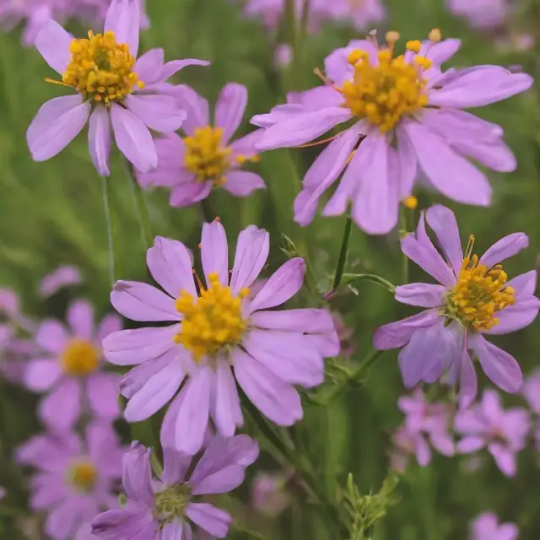
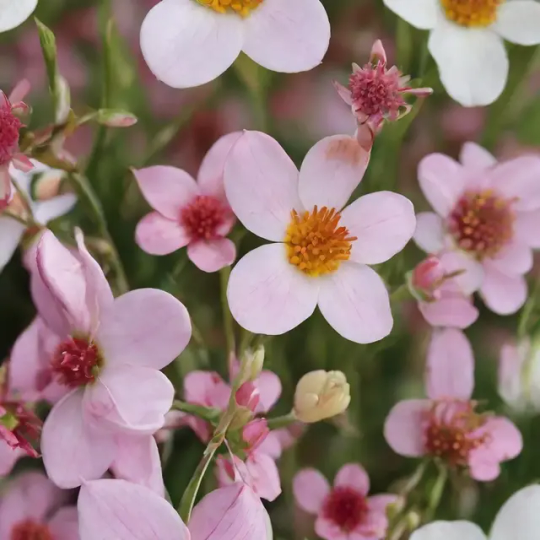
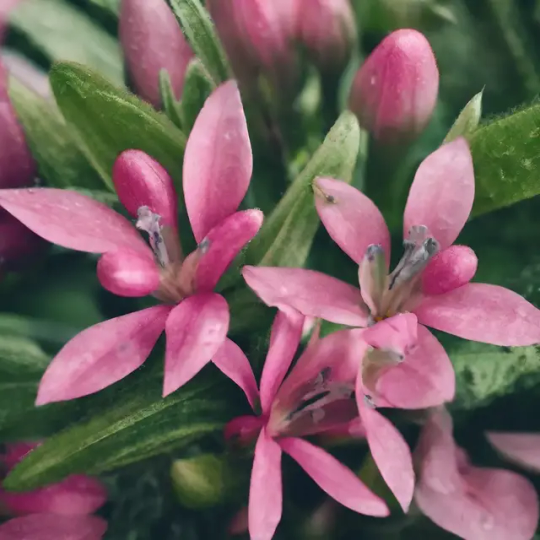
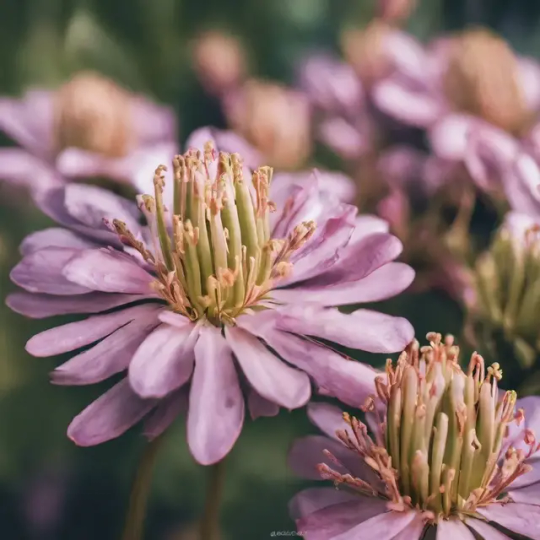
1 note
·
View note
Text
¿Historias cortas para no dormir y así no tener pesadillas? El rododendro o azalea.
El rododendro o azalea es un género de plantas angiospermas perteneciente a la familia Ericaceae, que contiene más de 1000 especies conocidas. Dado que es un género muy extenso, las plantas se organizan en subgéneros, secciones, subsecciones y series. Estos subgéneros se dividen en grupos: Azaleastrum Candidastrum
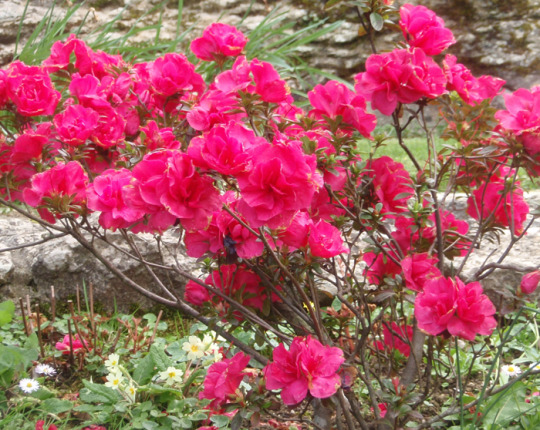
Azaleas y rododendros son arbustos del género Rhododendron, de la familia de las ericáceas. Destacan por la belleza de sus flores agrupadas en inflorescencias de colores muy variados y llamativos. Cuando Linneo creó el grupo botánico Rhododendron separó las azaleas de los rododendros, es decir constituían en principio dos géneros distintos, pero a partir del siglo XIX se llegó a la conclusión de que no debían mantenerse aparte. Hoy, género Rhododendron presenta ocho divisiones, dos de ellas azaleas.
#El rododendro o azalea es un género de plantas angiospermas perteneciente a la familia Ericaceae que contiene más de 1000 especies conocidas#¿Historias cortas para no dormir?
1 note
·
View note
Text
Alright Tumblr weirdos and autistics, assemble! I have need of you!
I need to write a short seminar about some kind of plant, and I have net zero inspiration, so I'm outsourcing it. Tell me the FREAKIEST, most We-Sure-This-Isn't-an-Alien? plant you know of, (or why a relatively common plant should belong in this category), sources very much appreciated, and if it makes me go 'The Fuck Is This Shit?' that will be the theme of my seminar.
An unfortunate caveat: This is for my Applied Botany class, so the subject plant is supposed to be Angiospermae (aka, has flowers), but the prof is chill enough that I can swing it as long as it can be classified as Embryophyta (aka, land plants).
Other than that, anything goes. Help me make this man tell horror stories about me in retirement!
119 notes
·
View notes
Note
is EVERY fruit an emotional support fruit now?
Thank you for this question, anon, it is crucial to the mascot lore. Any fruit that has been used for emotional support becomes an emotional support fruit at that instance. For example, a random orange is not an emotional support orange. Give it to someone as they're crying over Season 2 and it watches them/is consumed by them, voila, it is an emotional support orange!
It is the intent behind the planning, procurement, usage and consumption that defines an emotional support fruit. For example, during the first livestream, I procured an orange planning to use it for emotional support. It was used to give me that support. But at consumption stage I ate it because I was too gay for Crowley. It is still an emotional support fruit, it doesn't need to fit all four of the criteria.
The PPUC criteria of Emotional Support Fruit classication is crucial. Another thing, by fruit I absolutely mean the strictly botanical definition of fruit as either the reproductive or vestigial reproductive developed ovary of a member of Angiospermae under the plant kingdom.
I hope I have clarified it to your satisfaction.
#good omens mascot#good omens#good omens fandom#weirdly specific but ok#asmi#emotional support#emotional support fruit#good omens brainrot#good omens livestream#good omens 2#final fifteen#ineffable divorce#maggots#weirdly the prophet#good omens prophet#the lore expands
32 notes
·
View notes
Text

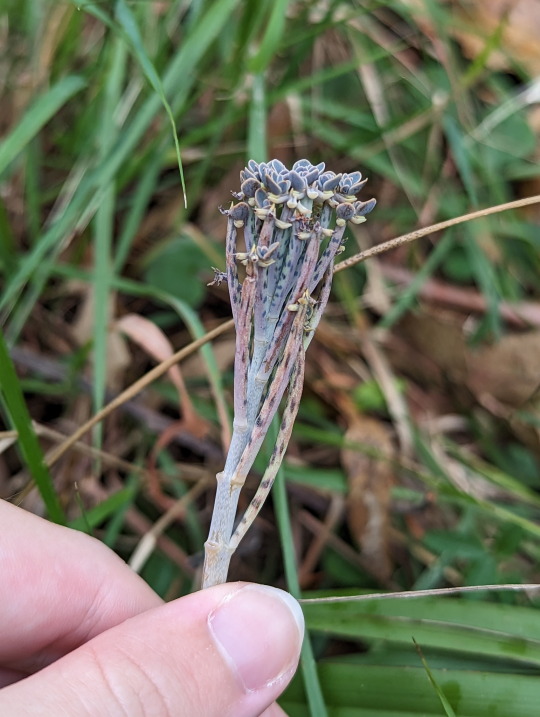
Mother-of-Millions
Kalanchoe delagoensis
20/03/23 - NSW
#Kalanchoe delagoensis#Mother-of-Millions#Kalanchoe#Kalanchoes#Crassulaceae#stonecrops#Magnoliopsida#Dicots#Angiospermae#angiosperms#Flowering Plants#flowers#Tracheophyta#Vascular Plants#Plantae#Plants#botany
349 notes
·
View notes
Text

#IFTTT#Flickr#waratah#telopeaspeciosissima#telopea#speciosissima#sydney#newsouthwales#australia#plantae#tracheophyta#angiospermae#magnoliopsida#proteales#proteaceae#grevilleoideae#embothrieae#embothriinae#new#south#wales#flower#native#nature#canon#macro#night#flash#jono#dashper
3 notes
·
View notes
Photo


Drosera tokaiensis
photo credit: 空猫 T. N
15 notes
·
View notes
Text
Top 10 instances of each taxonomic rank by number of named species
Data from Catalogue of Life (yes, I'm aware that taxonomic rank is largely arbitrary and that species boundary are fuzzy, especially outside of Eukaryotes; taxa within "quotes" are paraphyletic groups whose descendance encompasses others, e.g. "Reptilia" also contains the ancestry of Aves)
Largest Domains:
Eukarya (organisms with cell nuclei): 2.1 million species
Bacteria: 10,000 [currently named!] species
Archaea: 380 species
Largest Kingdoms:
Animalia or Metazoa (animals): 1.5 million species
Archaeplastida (green plants & kin): 380,000 species
Fungi (fungi): 160,000 species
"Protista" (all Eukaryotes that are not animals, plants, or fungi; Catalogue of Life splits from them the old "Chromista", but now that's not supported by morphology nor by phylogeny): 65,000 species
Largest Phyla:
Arthropoda (insects, crustaceans, spiders, &c): 1.2 million species
Angiospermae (plants with flowers): 350,000 species
Mollusca (clams, snails, slugs, and squids): 130,000 species
Ascomycota (various groups of fungi): 98,000 species
Chordata (vertebrates, lancelets, and sea squirts): 73,000 species
Basidiomycota (another group of fungi including most mushrooms): 53,000 species
Foraminifera (protists with calcareous shells): 50,000 species [this might count a great deal of extinct species]
Platyhelminthes (tapeworms & other flatworms): 23,000 species
Bryozoa (little colonial invertebrates): 21,000 species
Annelida (earthworms, leeches, & other segmented worms): 18,000 species
Largest Classes:
Insecta (insects): 970,000 species
"Magnoliopsida" (most flower plants): 260,000 species
Gastropoda (slugs & snails): 97,000 species
Arachnida (spiders, scorpions, and mites): 93,000 species
Liliopsida (a group of flower plants including grasses): 81,000 species
Malacostraca (crabs, shrimps, and some other crustaceans): 46,000 species
Agaricomycetes (mushrooms including agarics): 41,000 species
Dothideomycetes (another group of fungi): 32,000 species
Actinopterygii (ray-finned fish): 31,000 species
Bivalvia (clams, scallops, oysters, &c): 22,000 species
[Mammalia (mammals): 6000 species]
Largest Orders:
Coleoptera (beetles): 330,000 species
Diptera (flies & mosquitoes): 170,000 species
Lepidoptera (moths & butterflies): 160,000 species
Hymenoptera (ants, wasps, & bees): 120,000 species
Hemiptera (aphids, cicadas, & bedbugs): 100,000 species
Araneae (spiders): 50,000 species
Asparagales (orchids, onions, & agaves): 41,000 species
Asterales (daisies, dandelions, & sunflowers): 39,000 species
Orthoptera (crickets and grasshoppers): 30,000 species
Lamiales (mint, olives, and many herbs): 28,000 species
[Primates (lemurs, monkeys, & apes): 530 species]
Largest Families:
Curculionidae (weevils): 74,000 species
Staphylinidae (rove beetles): 67,000 species
Carabidae (ground beetles): 41,000 species
Cerambycidae (longhorn beetles): 36,000 species
Scarabaeidae (scarab beetles): 36,000 species
Asteraceae (most Asterales): 36,000 species
Orchidaceae (orchids): 31,000 species
Ichneumonidae (parasitoid wasps): 24,000 species
Fabaceae (beans): 24,000 species
Erebidae (a family of moths): 23,000 species
[Hominidae (great apes including humans): 8 species]
2 notes
·
View notes
Note
To #flower child
Here, and we are in different levels of reality, names for things change.
Were continuing the collective date, so you like flowers eh?
A flower, sometimes known as a bloom or blossom, is the reproductive structure found in flowering plants (plants of the division Angiospermae). The biological function of a flower is to facilitate reproduction, usually by providing a mechanism for the union of sperm with eggs. Flowers may facilitate outcrossing (fusion of sperm and eggs from different individuals in a population) resulting from cross-pollination or allow selfing (fusion of sperm and egg from the same flower) when self-pollination occurs.
There are two types of pollination: self-pollination and cross-pollination. Self-pollination occurs when the pollen from the anther is deposited on the stigma of the same flower, or another flower on the same plant. Cross-pollination is when pollen is transferred from the anther of one flower to the stigma of another flower on a different individual of the same species. Self-pollination happens in flowers where the stamen and carpel mature at the same time, and are positioned so that the pollen can land on the flower's stigma. This pollination does not require an investment from the plant to provide nectar and pollen as food for pollinators.[1]
Some flowers produce diaspores without fertilization (parthenocarpy). Flowers contain sporangia and are the site where gametophytes develop.
Many flowers have evolved to be attractive to animals, so as to cause them to be vectors for the transfer of pollen. After fertilization, the ovary of the flower develops into fruit containing seeds.
In addition to facilitating the reproduction of flowering plants, flowers have long been admired and used by humans to bring beauty to the environment, and also as objects of romance, ritual, esotericism, witchcraft, religion, holistic medicine, and as a source of food.
Etymology
Flower is from the Middle English flour, which referred to both the ground grain and the reproductive structure in plants, before splitting off in the 17th century. It comes originally from the Latin name of the Italian goddess of flowers, Flora. The early word for flower in English was blossom,[2] though it now refers to flowers only of fruit trees.[3]
Morphology
Diagram of flower parts.
Main article: Floral morphology
The morphology of a flower, or its form and structure,[4] can be considered in two parts: the vegetative part, consisting of non-reproductive structures such as petals; and the reproductive or sexual parts. A stereotypical flower is made up of four kinds of structures attached to the tip of a short stalk or axis, called a receptacle. Each of these parts or floral organs is arranged in a spiral called a whorl.[5] The four main whorls (starting from the base of the flower or lowest node and working upwards) are the calyx, corolla, androecium, and gynoecium. Together the calyx and corolla make up the non-reproductive part of the flower called the perianth, and in some cases may not be differentiated. If this is the case, then they are described as tepals.[6]
Perianth
Main article: Perianth
Calyx
The sepals, collectively called the calyx, are modified leaves that occur on the outermost whorl of the flower. They are leaf-like, in that they have a broad base, stomata, stipules, and chlorophyll.[7] Sepals are often waxy and tough, and grow quickly to protect the flower as it develops.[7][8] They may be deciduous, but will more commonly grow on to assist in fruit dispersal. If the calyx is fused together it is called gamosepalous.[7]
Corolla
The petals, together the corolla, are almost or completely fiberless leaf-like structures that form the innermost whorl of the perianth. They are often delicate and thin, and are usually coloured, shaped, or scented to encourage pollination.[9] Although similar to leaves in shape, they are more comparable to stamens in that they form almost simultaneously with one another, but their subsequent growth is delayed. If the corolla is fused together it is called sympetalous.[10]
Reproductive
Main article: Plant reproductive morphology
Reproductive parts of Easter Lily (Lilium longiflorum). 1. Stigma, 2. Style, 3. Stamens, 4. Filament, 5. Petal
Androecium
The androecium, or stamens, is the whorl of pollen producing male parts. Stamens consist typically of an anther, made up of four pollen sacs arranged in two thecae, connected to a filament, or stalk. The anther contains microsporocytes which become pollen, the male gametophyte, after undergoing meiosis. Although they exhibit the widest variation among floral organs, the androecium is usually confined just to one whorl and to two whorls only in rare cases. Stamens range in number, size, shape, orientation, and in their point of connection to the flower.[9][10]
Gynoecium
The gynoecium, or the carpels, is the female part of the flower found on the innermost whorl. Each carpel consists of a stigma, which receives pollen, a style, which acts as a stalk, and an ovary, which contains the ovules. Carpels may occur in one to several whorls, and when fused together are often described as a pistil. Inside the ovary, the ovules are suspended off of pieces of tissue called placenta.[11][12]
Variation
Although this arrangement is considered "typical", plant species show a wide variation in floral structure.[13] The four main parts of a flower are generally defined by their positions on the receptacle and not by their function. Many flowers lack some parts or parts may be modified into other functions or look like what is typically another part.[14] In some families, like Ranunculaceae, the petals are greatly reduced and in many species the sepals are colorful and petal-like. Other flowers have modified stamens that are petal-like; the double flowers of Peonies and Roses are mostly petaloid stamens.[15]
Many flowers have a symmetry. When the perianth is bisected through the central axis from any point and symmetrical halves are produced, the flower is said to be actinomorphic or regular. This is an example of radial symmetry. When flowers are bisected and produce only one line that produces symmetrical halves, the flower is said to be irregular or zygomorphic. If, in rare cases, they have no symmetry at all they are called asymmetric.[16][17]
Flowers may be directly attached to the plant at their base (sessile—the supporting stalk or stem is highly reduced or absent).[18] The stem or stalk subtending a flower, or an inflorescence of flowers, is called a peduncle. If a peduncle supports more than one flower, the stems connecting each flower to the main axis are called pedicels.[19] The apex of a flowering stem forms a terminal swelling which is called the torus or receptacle.[17]
* It has been too long since I properly studied these.
* Re-learning the terms will be a nice challenge, as well as a useful distraction.
* …thank you.
6 notes
·
View notes
Note
Were continuing the collective date, so you like flowers eh?
A flower, sometimes known as a bloom or blossom, is the reproductive structure found in flowering plants (plants of the division Angiospermae). The biological function of a flower is to facilitate reproduction, usually by providing a mechanism for the union of sperm with eggs. Flowers may facilitate outcrossing (fusion of sperm and eggs from different individuals in a population) resulting from cross-pollination or allow selfing (fusion of sperm and egg from the same flower) when self-pollination occurs.
There are two types of pollination: self-pollination and cross-pollination. Self-pollination occurs when the pollen from the anther is deposited on the stigma of the same flower, or another flower on the same plant. Cross-pollination is when pollen is transferred from the anther of one flower to the stigma of another flower on a different individual of the same species. Self-pollination happens in flowers where the stamen and carpel mature at the same time, and are positioned so that the pollen can land on the flower's stigma. This pollination does not require an investment from the plant to provide nectar and pollen as food for pollinators.[1]
Some flowers produce diaspores without fertilization (parthenocarpy). Flowers contain sporangia and are the site where gametophytes develop.
Many flowers have evolved to be attractive to animals, so as to cause them to be vectors for the transfer of pollen. After fertilization, the ovary of the flower develops into fruit containing seeds.
In addition to facilitating the reproduction of flowering plants, flowers have long been admired and used by humans to bring beauty to the environment, and also as objects of romance, ritual, esotericism, witchcraft, religion, holistic medicine, and as a source of food.
Etymology
Flower is from the Middle English flour, which referred to both the ground grain and the reproductive structure in plants, before splitting off in the 17th century. It comes originally from the Latin name of the Italian goddess of flowers, Flora. The early word for flower in English was blossom,[2] though it now refers to flowers only of fruit trees.[3]
Morphology
Diagram of flower parts.
Main article: Floral morphology
The morphology of a flower, or its form and structure,[4] can be considered in two parts: the vegetative part, consisting of non-reproductive structures such as petals; and the reproductive or sexual parts. A stereotypical flower is made up of four kinds of structures attached to the tip of a short stalk or axis, called a receptacle. Each of these parts or floral organs is arranged in a spiral called a whorl.[5] The four main whorls (starting from the base of the flower or lowest node and working upwards) are the calyx, corolla, androecium, and gynoecium. Together the calyx and corolla make up the non-reproductive part of the flower called the perianth, and in some cases may not be differentiated. If this is the case, then they are described as tepals.[6]
Perianth
Main article: Perianth
Calyx
The sepals, collectively called the calyx, are modified leaves that occur on the outermost whorl of the flower. They are leaf-like, in that they have a broad base, stomata, stipules, and chlorophyll.[7] Sepals are often waxy and tough, and grow quickly to protect the flower as it develops.[7][8] They may be deciduous, but will more commonly grow on to assist in fruit dispersal. If the calyx is fused together it is called gamosepalous.[7]
Corolla
The petals, together the corolla, are almost or completely fiberless leaf-like structures that form the innermost whorl of the perianth. They are often delicate and thin, and are usually coloured, shaped, or scented to encourage pollination.[9] Although similar to leaves in shape, they are more comparable to stamens in that they form almost simultaneously with one another, but their subsequent growth is delayed. If the corolla is fused together it is called sympetalous.[10]
Reproductive
Main article: Plant reproductive morphology
Reproductive parts of Easter Lily (Lilium longiflorum). 1. Stigma, 2. Style, 3. Stamens, 4. Filament, 5. Petal
Androecium
The androecium, or stamens, is the whorl of pollen producing male parts. Stamens consist typically of an anther, made up of four pollen sacs arranged in two thecae, connected to a filament, or stalk. The anther contains microsporocytes which become pollen, the male gametophyte, after undergoing meiosis. Although they exhibit the widest variation among floral organs, the androecium is usually confined just to one whorl and to two whorls only in rare cases. Stamens range in number, size, shape, orientation, and in their point of connection to the flower.[9][10]
Gynoecium
The gynoecium, or the carpels, is the female part of the flower found on the innermost whorl. Each carpel consists of a stigma, which receives pollen, a style, which acts as a stalk, and an ovary, which contains the ovules. Carpels may occur in one to several whorls, and when fused together are often described as a pistil. Inside the ovary, the ovules are suspended off of pieces of tissue called placenta.[11][12]
Variation
Although this arrangement is considered "typical", plant species show a wide variation in floral structure.[13] The four main parts of a flower are generally defined by their positions on the receptacle and not by their function. Many flowers lack some parts or parts may be modified into other functions or look like what is typically another part.[14] In some families, like Ranunculaceae, the petals are greatly reduced and in many species the sepals are colorful and petal-like. Other flowers have modified stamens that are petal-like; the double flowers of Peonies and Roses are mostly petaloid stamens.[15]
Many flowers have a symmetry. When the perianth is bisected through the central axis from any point and symmetrical halves are produced, the flower is said to be actinomorphic or regular. This is an example of radial symmetry. When flowers are bisected and produce only one line that produces symmetrical halves, the flower is said to be irregular or zygomorphic. If, in rare cases, they have no symmetry at all they are called asymmetric.[16][17]
Flowers may be directly attached to the plant at their base (sessile—the supporting stalk or stem is highly reduced or absent).[18] The stem or stalk subtending a flower, or an inflorescence of flowers, is called a peduncle. If a peduncle supports more than one flower, the stems connecting each flower to the main axis are called pedicels.[19] The apex of a flowering stem forms a terminal swelling which is called the torus or receptacle.[17]
*You hear scribbling sounds*
Fascinating, truly.
*Nerdgasm hehe*
Silence.
2 notes
·
View notes